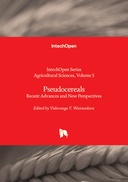Explore

Although they are neither technically classified as grasses nor as actual cereal grains, pseudocereals are plants that yield fruits or seeds that are utilized and consumed like grains. Pseudocereals are complete grains that are usually high in protein and free of gluten. Supposedly many of the “ancient grains” are actually pseudocereals. The Food and Agricultural Organization (FAO) has also noted that pseudocereals greatly improve health and nutrition, as well as an individual’s food supply and standard of living, all of which can contribute to future food security and sustainability. Their protein-derived peptides have been shown in previous investigations to possess antioxidant, anti-inflammatory, anti-hypertensive, anti-cancerous, and hypocholesterolemic qualities. Because pseudocereals have these intriguing qualities, more research is required to determine how best to incorporate them into the diet and what health benefits they may offer, which is exactly what this book is about. It provides essential information to scientific and non-scientific communities alike to keep interest in pseudocereals alive for the overall health and wellness of the planet.
This book is included in DOAB.
Why read this book? Have your say.
You must be logged in to comment.
Rights Information
Are you the author or publisher of this work? If so, you can claim it as yours by registering as an Unglue.it rights holder.Downloads
This work has been downloaded 33 times via unglue.it ebook links.
- 33 - pdf (CC BY) at mts.intechopen.com.
Keywords
- agricultural science
- Agriculture & Farming
- Technology, engineering, agriculture
Links
DOI: 10.5772/intechopen.107794Editions

